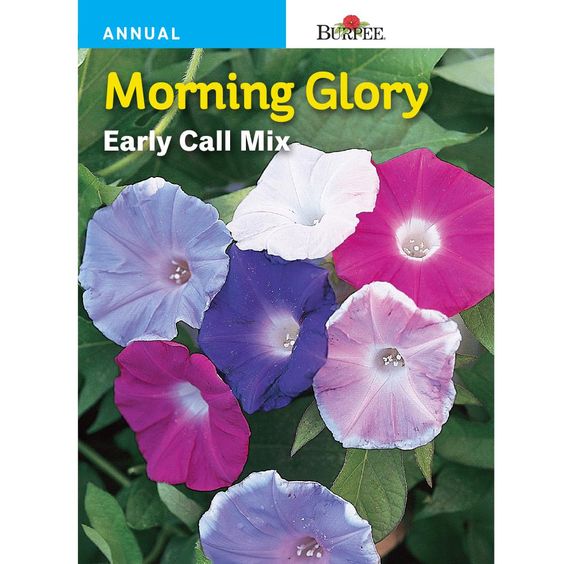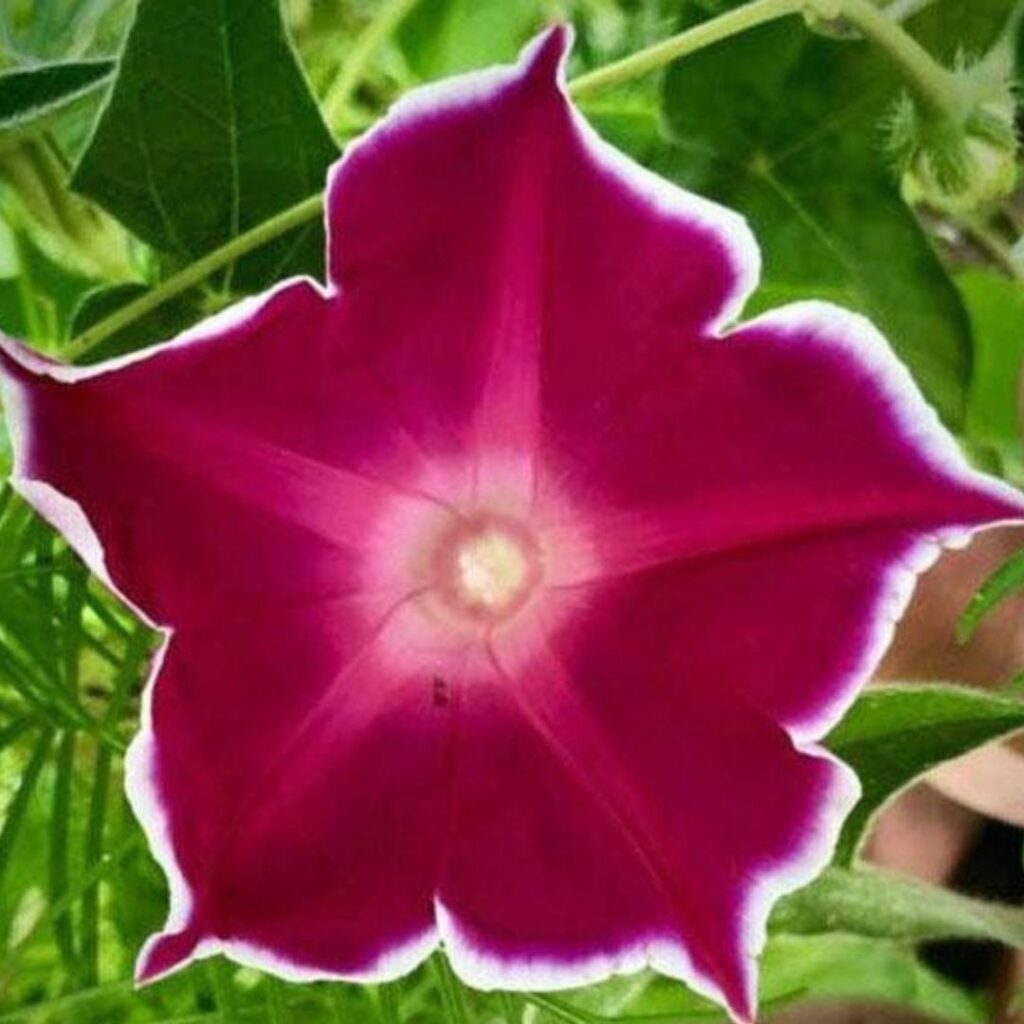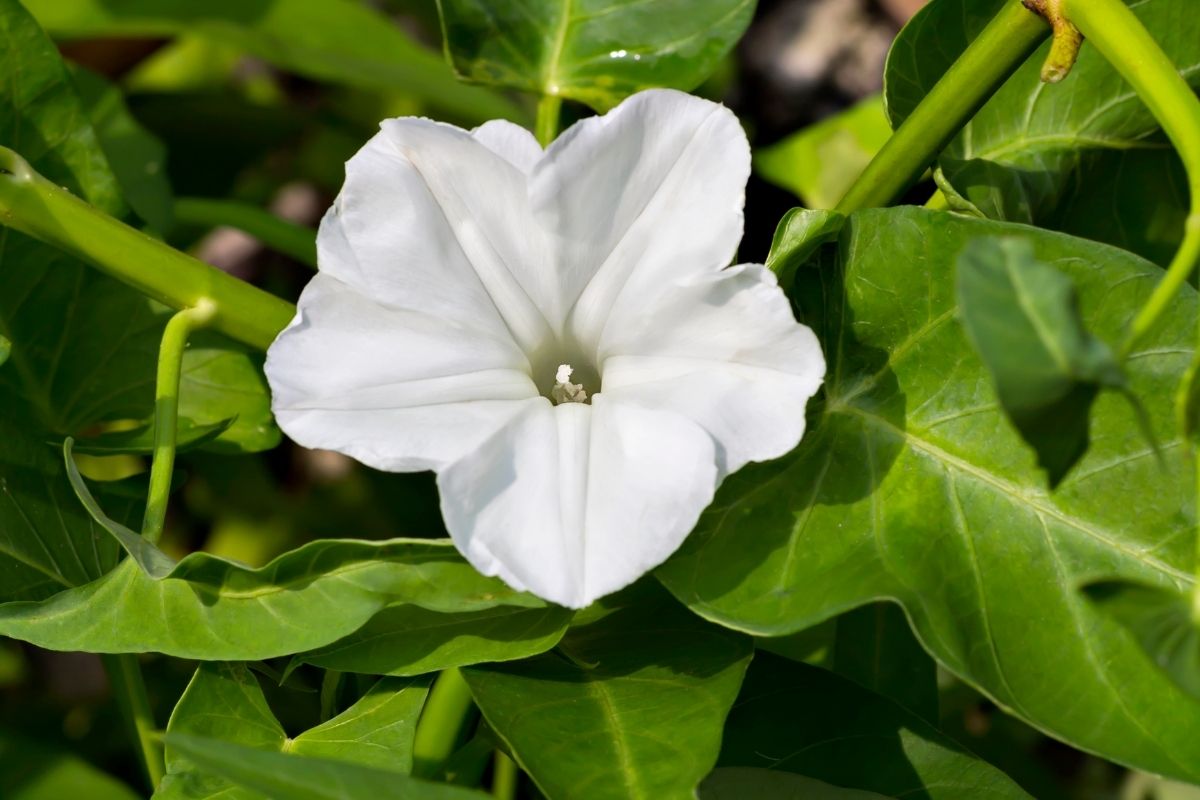Morning glory is one of the easiest plants to grow in the home garden. It can be grown from seed or cuttings and will thrive in most soil types.
The morning Glory Plants has been around since ancient times, and it was thought by some people to be an omen of good luck.
Today, this beautiful flowering flower is still used as a symbol of happiness and prosperity.
There are many varieties of morning glory, and each variety has its own unique characteristics. Some varieties are more fragrant than others, and some produce larger flowers than others.
In this article, we will be discussing the various different types of Morning Glory that can be found and grown in your garden.
Blue Morning Glory (Ipomoea Violacea)

The blue morning glories are a group of flowering vines that produce large trumpet-shaped flowers. Hummingbirds and butterflies are attracted to this flower. They are great to be used in hanging baskets, ground cover, or in pots.
Cardinal Climber (Ipomoea Quamoclit)

The Cardinal Climber is also known as the Hummingbird Vine. Grown for its white center and scarlet blooms. Easy to grow and requires little care. It does best when planted in partial shade.
Grandpa Ott (Ipomoea Nil)

Originally from Germany, these heart-shaped emerald leaves combined with royal purple petals are a beautiful combination. Blooming from summer all the way through to fall. No pruning is required with this plant, and butterflies and hummingbirds are attracted to them.
Heavenly Blue (Ipomoea Tricolor)

This plant produces wide and vibrant blue petals with a yellow and white center. Due to its appearance, it has won several awards and is known to look great wherever you plant them.
Moonflower (Ipomoea Alba)

The Moonflower has a very delicate-looking flower. With white/cream petals and providing your garden with a very sweet and pleasing scent. This flower will open up at night and close up in the morning.
Tall Morning Glory (Ipomoea Purpurea)

Native to Mexico and Central America. This variety can grow up to 10 feet tall, which produces deep blue and purple petals with a white center. Like the Moonflower, the blooms will close up in the afternoons, but will climb quickly.
Scarlett O’Hara (Ipomoea Nil)

This variety has vibrant red petals and white centers, which are around 5 inches in width. These will open in the mornings and bloom from summer all the way to fall. They can grow to around 10 feet tall, but look great in pots and in hanging baskets as well.
Ivy Morning Glory (Ipomoea Nil)

Pollinators like butterflies and bees are attracted to this kind of plant. They have vibrant purple-blue petals and white and yellow centers. These colorful flowers will make an eye-catching addition to any garden. However, they prefer full sunlight, but any type of soil to grow well.
Carnevale di Venezia

Another striking looking variety of morning glory Plants. The blooms are made up of streaks of purple-pink and white in varying thicknesses. This is a bold and vibrant bloom that will catch your eye. They can spread around 10 feet, but also claim to be around 16 feet tall.
Beach Morning Glory (Ipomoea Pes-Caprae)

This variety can be typically found on the beach edge. However, it doesn’t grow very high compared to some other varieties mentioned. They produce pale pink and white petals. A very attractive variety of Morning Glory Plants to look at.
Caprice

These are really quick-growing vines that can grow to around 20 feet. The petals are pale blue with striking purple streaks heading towards the center of the flower. They prefer full sunlight, but can survive with partial shade as well.
Crimson Rambler (Ipomoea Purpurea)

Burgundy-rose petals and a white center. A very classic-looking morning Glory Plants, that is simple but looks very pleasing. They grow best when in full sunlight, but in any type of soil.
Knowlians Black

They may not be black, but these petals produce deep purple petals. This plant will definitely grab your attention when you see it in a garden. However, this is a much slower growing plant compared to other varieties of morning glory we have mentioned.
Early Call Mix

If you like pastel colors, then this variety of morning glory is for you. The vines can grow to around 15 feet with the more sun that they receive. Pastel purple and pinks work so well with one another.
Inkspots

As the name suggests, these flowers will produce petals in various shades of blue, white, and purple. Their trumpet-shaped petals are perfect for growing up fences. A very fast-growing plant that can reach 10 feet in height.
Seta

Seta is known for its bold white petals paired with purple flecks that create a star formation. The purple flecks make this flower interesting to look at, but also help to make this bloom look even more delicate.
Early Call (Ipomoea Nil)

These blooms can be seen in a variety of colors such as rose, white, pink, lavender, and blue. On some of these blooms, you will also notice they have a white border.
Flying Saucers (Ipomoea Tricolor)

Typically, the petals on this variety are a mixture of white, blue, and purple stripes heading down the petals and towards the center. They will attract pollinators to your garden and will grow well if they are given full sun or partial shade.
Glacier Moon (Ipomoea Tricolor)

Just like the name suggests, the blooms of this plant produce pale blue petals. This is a type of vine that can grow to around 8 feet in height. These flowers will bloom during the day, but if the sun is too strong they will close up.
Venice Blue

Similar to the Flying Saucer, the Venice Blue has petals that are streaked with various shades of light and dark blue. It can grow to around 12 feet in height and loves sunlight.
Hawaiian Bell (Ipomoea Beraviensis)

A very dramatic-looking flower, with red-pink petals, with a red and yellow center and a white stripe, breaks the petal and the centers up. Seen as a more tropical vine, which is fast-growing that will bloom sporadically all year round.
Merremia Umbellata (Ipomoea Polyanthes)

A smaller variety of morning glory, that reproduces small bold yellow blooms. They love full sunlight and can be grown in pots or hanging baskets.
Minibar Rose (Ipomoea X Imperialis)

The blooms produced on this variety are a crimson-rose color, with a white border on the tips of the petals and a white center. They can grow to around 4 to 6 feet in height.
Pearly Gates (Ipomoea Tricolor)

Another white species of morning glory. Bold white petals with a small and delicate yellow center. These vines can grow to around 13 feet, which produces very dense foliage.
Red Picotee (Ipomoea Nil Red Picotee)

A Japanese version of morning glory. This flower blooms large star-shaped red-pink flowers. It also sports a white border and center. An attractive flower for any garden.
Chocolate Rose Silk (Ipomoea X Imperialis)

The Rose Silk is a type of Japanese morning glory. Its petals are a soft purple to pink color with a white border and throat. However, in certain lights, the petals can look much darker.
Tie Dye (Ipomoea X Imperialis)

We have seen a similar version of this species in different colors on our list already. This one sees various shades of pastel to deep purple streaked down the petals. This creates a very eye-catching and attractive look.
Wedding Bells (Ipomoea Tricolor)

A very delicate-looking flower, with appealing pale lavender petals. They can grow to around 10 feet in height and will attract pollinators such as birds, bees, and butterflies to your garden.
White Dwarf

A small white bloom with wide flat petals and a very vibrant yellow star center. Looking very similar to daisies when at this plant from afar. Ideal to be used in pots or as ground cover.
Wooly Morning Glory

This species of Morning Glory has various names such as Elephant Creeper, or Hawaiian Baby Woodrose. This species is native to India but has been introduced worldwide.
Velvet- looking Lavender petals surround a deeper purple center. An attractive flower that is also used for medical purposes as well.
Final Thoughts
There are various varieties of Morning Glory that have roots from all over the world. All the species of Morning Glory we have mentioned can be grown in your garden at home.
They are typically grown as either ground cover, in port or, as vines. They are known for their climbing abilities, and some varieties can grow up to impressive heights.
There is no denying that the Morning Glory plant produces colorful blooms. This will add a lot of color to your garden.
Especially, as a lot of these varieties aren’t too fussy about the kind of soil that they are planted in. All they really require is to receive as much sunlight as possible.
Now you can start choosing your favorite morning Glory plants to add to your own garden.







